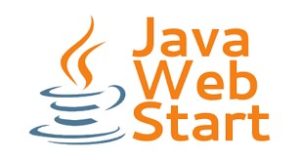It’s Monday morning and you’re logging into Oracle E-Business Suite (EBS). You haven’t been able to launch forms in Chrome or Firefox in years, and using Edge was never even an option. You only have one browser to choose from and that’s Internet Explorer. Sure, it’s not the prettiest, most modern-looking of the bunch, but at least it works… for now.
 The Background
The Background
Over the last decade, browsers have evolved and modernized. One of the casualties to modernization, however, was the browser plugin, a piece of technology that EBS users had relied on to launch Oracle forms (via the Java plugin). Due to potential security risks, modern browsers like Chrome and Firefox made the push to eradicate browser plugins entirely, leading EBS users to flock towards the ever-steady Internet Explorer as their last hope. All the while, Microsoft was simultaneously developing their own new, modern browser called Edge. This prospect signaled to many that the end of Internet Explorer was looming.
In the spring of 2021, Microsoft finally made the announcement many were anticipating – Internet Explorer would be retiring on June 15th, 2022. Frankly, there are probably more people surprised that Internet Explorer is still in use than those who would be affected by the news. Unfortunately, for those of us using Oracle E-Business Suite, we were among the affected. So, what do we do now?
Oracle responded to the change by announcing the development of Java Web Start (JWS for short), publishing its first note on the subject back in 2017. With JWS, Oracle removed its dependency on browser plugins and developed their own solution. Rather than rely on browser-based functions to launch forms, users would be prompted to download a Java Network Launch Protocol (or JNLP) file from their Oracle environment instead. Then, once downloaded to their machine, users could double-click the file, prompting forms to open. No plugins, no superfluous browser windows or tabs, just Oracle forms.
 The Solution
The Solution
So how can you, the EBS user, plan for a such a thing? Surely, this must be complicated, right? Actually the transition from browser-based forms to JWS is fairly straight forward. First and foremost, you’re going to need access to Oracle Support Knowledge Base and familiarize yourself with Doc ID 2188898.1. While it might be a lot to take in at first, hopefully, the below breakdown can make this easier to digest.
- This step is by no means specific to this task, but please do yourself a favor and ensure you have a good backup before starting any work. Murphy’s Law – what can go wrong will go wrong – and you’ll be kicking yourself if you need to restore but can’t.
- Before we go around making changes, you’ll want to make sure your EBS version is up to par first. If you’re on 12.1 or 12.2 – good news – you don’t need to do anything special. Unfortunately, users on older versions like 12.0 and 11i will need to upgrade before they can leverage this technology.
- Once you know your EBS version is copacetic, you’ll likely need to upgrade your JRE version. Currently, the minimum requirement is JRE 8 release 121, but opting to go for the latest release is usually preferred. You should be able to easily confirm this by searching for the “s_sun_plugin_ver” value in your applications context file. Please be aware that, depending on your current JRE version, you may need to undertake additional patching as a part of this update, as well.
- Now comes the most time-consuming part of the project, and that’s the patching. How much patching you’ll have to do will depend on how up-to-date your EBS environment is. While combing through Doc ID 2188898.1, you may find the need to apply middleware patches, baseline code level updates, generic patches for JWS, product-specific patches, compatibility patches for specific browsers, and one-off patches for specific bugs. Review these materials carefully and ensure READMEs are followed closely.
- After patching, you will need to run regenerate your JAR files using the adadmin utility.
- Lastly, before you start up your application to test, you’ll need to update the “s_forms_launch_method” parameter in your application context files. You should be updating the setting from “browser” to “jws” and then run autoconfig in the appropriate order.
Once these steps are complete, you’re free to startup your EBS application and access the login page. But this time, instead of bothering with Internet Explorer, let’s treat ourselves with Chrome, Firefox, or even Edge.
When you finally go to launch your forms, you’ll be prompted to download that JNLP file we mentioned earlier. Please note, browser security may alert you to the fact that this type of file may be harmful to your computer, though this message is to be expected per Oracle documentation. Oracle provides some options to clean this up so users don’t have to encounter this message, though this will require their Windows administrator to review Oracle Doc ID 2188898.1 (specifically, Section 6). Until then, please elect to keep the JNLP file, when prompted, so it may be downloaded and opened in order to launch forms.
 Conclusion
Conclusion
Once you have accepted to download the JNLP file, the only thing left to do is open it up. So as your mouse makes that final click and forms begin to launch, revel in your newfound independence from browser plugins and take solace in the fact that you’ll never have to open Internet Explorer ever again. Finally, you can stop worrying about whether or not your workstation is under support and get back to focusing on the work, itself, with Java Web Start.

